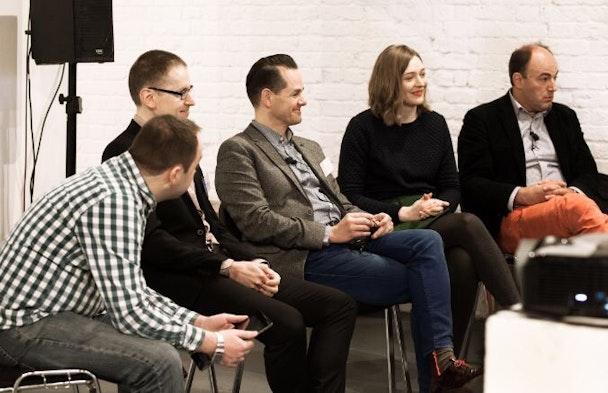‘Sensecraft’: 5 marketing lessons on appealing to the senses
Apple. Everyone knows what the tech giant looks like. An iconic half eaten logo synonymous with a chic, intuitive feel. But what would the world’s richest company smell like? What happens when the most immediate senses associated with your brand are stripped away?

Many more intelligent scholars than I have written in detail about the sensory economy - which is why we decided to bring some together for a breakfast event in Hoxton recently chaired by The Drum’s very own Stephen Lepitak (see main image.) We want to understand why marketers venture into the realm of the senses, as customers increasingly seek out more personalised experiences that go beyond the everyday – all part of our ongoing approach to challenge the conventions of marketing to create more impactful experiences for clients and their consumers.
The practical art of what we’re terming ‘Sensecraft' allows marketers to identify and deploy tangible initiatives to enhance the consumer’s experience of the brand, which will increase both brand preference and the satisfaction of buyers who have chosen that brand.

Sensory audit
We start by mapping a brand’s sensory experience across the customer journey (nkd-brew.com). The audit should address the current literal and figurative touchpoints in order to evaluate where opportunities exist to introduce sensory add-ons that will upgrade that experience. The whole point of ‘Sensecraft’ is that sensory influences frequently bypass our rational minds, so what may seem rationally unimportant can still exert a profound effect on consumers, especially from brands that consider themselves intangible.
Love beyond first sight
It used to be thought that each of our five senses operated independently; now we’re beginning to discover that people’s perception of a brand can be the result of our senses combining in surprising and unexpected ways. That’s according to experimental psychologist Professor Charles Spence who has made it his life’s work to study the subject.
Spence has highlighted the rules of sensory dominance, where our brains prioritise the information from one sense over another. For instance, the dominance of sight over the sense of hearing gives rise to the so-called McGurk effect - being influenced by the shape of the mouth as people speak.
Experience is magnified in totality
Combining senses in complementary or congruent ways can deepen the emotional connection from the consumer, leading to superadditivity. Spence states “Sometimes the brain adds one and one and gets three, the result is not always based on the sum of its parts”. Ice cream on a white plate tastes sweeter then the same ice cream on a black plate; the sound of a deodorant spray has a discernible influence on how well we believe it works.
This is a point which Reuben Arnold at Virgin Atlantic understands well: “Experience is what people value, not just product or, for us, service but the combination of how they come together. We’re trying to provide a multi-sensory offering.” He explains that lighting is a particularly important element which can help alleviate the impact of long haul flights and is specifically controlled over four hour periods. In his job as Virgin Atlantic’s SVP of marketing and customer experience, the importance of the senses cannot be underestimated.
But there are pitfalls for the unwary. Morrin & Chebat (2005) found that playing background music in a mall led to an increase in sales, yet adding an ambient scent had little effect. But the combination of both music and scent significantly reduced sales. Together the two senses were incongruent parts that don’t work with each other and led to subadditivity.
Wake up and smell the coffee
There is a plethora of language to describe specific sights and sounds, yet smell has only a limited vocabulary. We lack fluency in the ‘language of scent’, which becomes a barrier when we try to exploit the sense of smell in marketing, according to Lizzie Ostrom from Odette Toilette. Ostrom believes it’s important to develop a richer vocabulary for articulating differences between scents if we want to harness this for brands. “People are less discerning and fluent when it comes to smell, it’s a great stimulus. It requires a different vocab to help know how you’re trying to describe a scent. And language lets us go from an abstract to a more concrete idea in our minds when dealing with intangible properties.”
I ‘feel’ we need to go further
Studies have shown that the perceived authority of a source will indicate how trustworthy a person finds their information. And as such we need to pay attention to how brand affinity can be influenced by sensory experience. The comforting feeling we get from the subtle fragrance in a hotel lobby; the sense of trust evoked by the solidity of an accountancy firm’s boardroom table; we may not like to admit it but decisions can be influenced by these unconscious reactions. Every experience we have with Brands is mediated through our senses. That’s why we at Naked Communications recognised the importance of producing a new framework where brands reimagine sensory experience from the core of their marketing planning.
Will Collin, founding partner of Naked Communications

